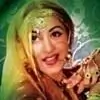of past and present
by Syed Badrul Ahsan
All of this, and a lot more besides, is what you come by in Manek Premchand's painstaking survey of the history of music in modern India. But there is a caveat here, which is that the music he deals with relates somewhat to ghazals but largely to songs as they have been made for Indian cinema in the golden era straddling the 1930s to part of the 1970s. No, Premchand does not say so in so many words. But the personalities he deals with — singers, lyricists, composers — are his reference to the long story of music he handles. And he handles it on a big scale, seeing that where music buffs earlier focused only on those who lent their voices to the songs, Premchand concentrates on the history behind the poetry and the melody that went into the songs. To be sure, he also throws up all those much-needed life sketches of the men and women he brings to light in his work. Take the sad story of Geeta-Roy Dutt, for instance. She was a rising singer when she met Guru Dutt. When they fell in love and married, it was nearly everyone's expectation that the pair would together take the world by storm. It did not exactly happen that way, for Guru Dutt soon revealed the dark side of his personality through forbidding Geeta to sing any more. When she tried to keep up the practice through singing in clandestine fashion, he discovered the 'crime' and what followed was traumatic. Geeta Dutt suffered tragedy three times over — through her husband's ban on her singing, through his consuming passion for Waheeda Rehman, through his eventual suicide. Fifteen years after Dutt's death, Geeta passed on herself, in an extremity of sadness.
There are stories here that recreate the past for those who have lived through it, all through their adolescence and into adulthood. Hemant Kumar (or Hemonto Mukherjee) was a tireless traveler, forever commuting between Bombay and Calcutta, singing as well as composing music for such movies as Nagin. His story is one of those incredible tales of luck and dedication combining to produce greatness in a man. Hemant Kumar was supposed to be an engineer. He ended up being a diligent creator of music, and not just in Hindi movies. His legendary status in Bengali music and his particular devotion to Rabindrasangeet catapulted him in his lifetime to heights that few people ever reach. And he achieved all that through smoking sixty cigarettes a day! If you go into an observation of the careers of composers, it is all here. Naushad's rise and endurance hardly need any retelling. But there is Naashaad too, the musician who rather late in life chose to migrate to Pakistan from India. Anyone among you who recalls Talat Mehmood's Tasveer Banata Hoon / Tasveer Nahin Banti will know the immensity of creativity in Naashaad. In Pakistan, he did wonders as well. Noor Jehan's rendering of the Salgirah song, Le Aaee Phir Kahan Par / Kismat Hamein Kahan Se will remain testimony to the genius in Naashaad. And while you mull over that, do not ignore such giants as Gulzar. The sheer number of awards he has received is pretty mind-boggling. He has been honoured for such qualities as best lyrics writer, best director, best dialogue writer, best story writer, best feature film maker and best documentary maker. Is there anything else that he has not touched? The first song he wrote was a result of Shailendra's asking him to compose one for the movie Bandini. It became a hit. Try humming Mora Gora Ang Layee Le / Mohe Shaam Rang Dayee De — and you will picture an expansive twilight of poetry. Gulzar's marriage with Rakhee was not destined to last, but his love for her has never subsided. He dedicated the work, Ravi Paar and Other Short Stories, to her. Meena Kumari valued his poetic judgement. She left her poetry (did you know she too had been smitten by the Muse?) with him. He subsequently had them published as Meena Kumari Ki Shairi. When the next time around you hear Lata singing Humne Dekhi Hai In Ankhon Ki Mehekti Khushboo or Kishore Kumar crooning Aanewala Pal Jaanewala Hai, whisper to your soul that behind the music there is Gulzar.
Yesterday's Melodies is an unputdownable affair, one of the reasons being that you sing as you go along. When you read the story of the composer Ghulam Mohammad's career, you cannot but bring to life that ageless song of his once more. Yes, we are speaking of the Rafi-Lata number Hum Tum Ye Bahar Dekho Rang Laya Pyar / Barsaat Ke Maheene Mein. And would you like giving Saigal's Main Kya Janu Kya Jadu Hai a try? That second 'kya', says Premchand, is hard to pick up. But it has to soar if it has to have any meaning.




























